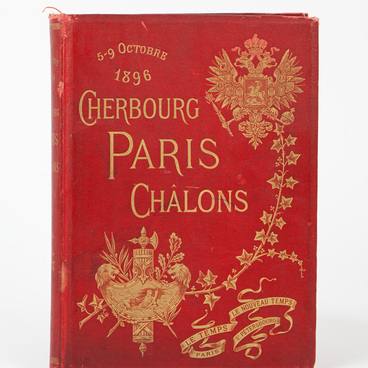Three library halls of the Alexander Palace were originally furnished with mahogany cabinets, chairs, tables, and display cases for various collections, made during the reign of Emperor Nicholas I in the second quarter of the 19th century. However, all the furniture of the library was lost during the Second World War.
The present-day Great Library Hall features ash bookcases in the late Empire style. They were made in the 1830s to a design by the architect Alexander Staubert for the offices of the Senate and the Synod and are close in their general artistic approach to the lost library furniture in the imperial residence of Tsarskoe Selo.
The decor of bookcases is minimalist and austere. Their main decoration is the carved images of Medusa Gorgon’s head on the door leaves. Medusa Gorgon is a famous character of Greek mythology. We usually imagine her as a creature, causing terror. What is the story of this ancient Greek heroine? As a young girl, she enchanted Poseidon, god of the sea, who forcibly possessed her in the temple of Athena. The angry goddess punished the girl by turning her into a monster with snakes instead of hair and giving her the power to turn any living thing into stone with one look. Since then, Medusa has been forced into hiding. However, Perseus found her and beheaded her. Medusa’s head, even after death, retained the power to turn any living thing into stone and was given to Athena who attached it to her legendary shield, the Aegis. Later, in ancient Rome, the serpent-haired head of Medusa became one of the most popular images on metal ornaments that served as military insignia.
Also Gorgon was depicted on military medals, ornaments on horse harness, sometimes on armor and shields. The myth of Medusa at different times inspired artists, sculptors and poets. Over time, the image of Medusa was no longer portrayed as terrible, and the gorgoneion — a medallion or mask depicting her head — became a decorative element that adorns many architectural monuments and furnishings.
Visitors to the Alexander Palace see the image of Medusa Gorgon in the Great Library Hall. On the doors of the cabinets, we see the face not of a fairy-tale monster, but of a gentle, innocent girl. Her hair is not frightening snakes, but heads and wings of birds as a symbol of her freedom and ability to fly.
The present-day Great Library Hall features ash bookcases in the late Empire style. They were made in the 1830s to a design by the architect Alexander Staubert for the offices of the Senate and the Synod and are close in their general artistic approach to the lost library furniture in the imperial residence of Tsarskoe Selo.
The decor of bookcases is minimalist and austere. Their main decoration is the carved images of Medusa Gorgon’s head on the door leaves. Medusa Gorgon is a famous character of Greek mythology. We usually imagine her as a creature, causing terror. What is the story of this ancient Greek heroine? As a young girl, she enchanted Poseidon, god of the sea, who forcibly possessed her in the temple of Athena. The angry goddess punished the girl by turning her into a monster with snakes instead of hair and giving her the power to turn any living thing into stone with one look. Since then, Medusa has been forced into hiding. However, Perseus found her and beheaded her. Medusa’s head, even after death, retained the power to turn any living thing into stone and was given to Athena who attached it to her legendary shield, the Aegis. Later, in ancient Rome, the serpent-haired head of Medusa became one of the most popular images on metal ornaments that served as military insignia.
Also Gorgon was depicted on military medals, ornaments on horse harness, sometimes on armor and shields. The myth of Medusa at different times inspired artists, sculptors and poets. Over time, the image of Medusa was no longer portrayed as terrible, and the gorgoneion — a medallion or mask depicting her head — became a decorative element that adorns many architectural monuments and furnishings.
Visitors to the Alexander Palace see the image of Medusa Gorgon in the Great Library Hall. On the doors of the cabinets, we see the face not of a fairy-tale monster, but of a gentle, innocent girl. Her hair is not frightening snakes, but heads and wings of birds as a symbol of her freedom and ability to fly.




